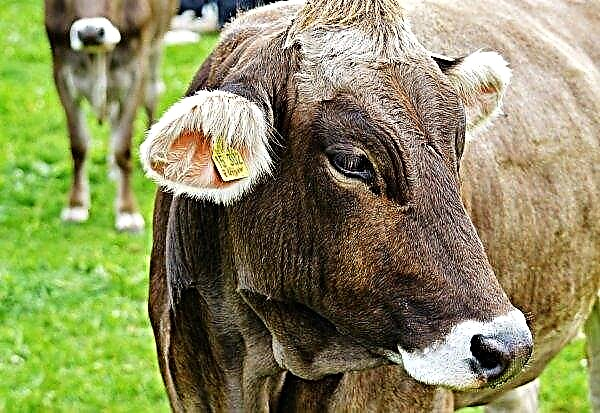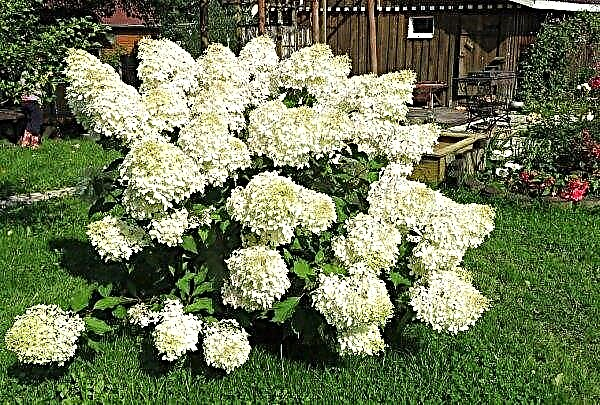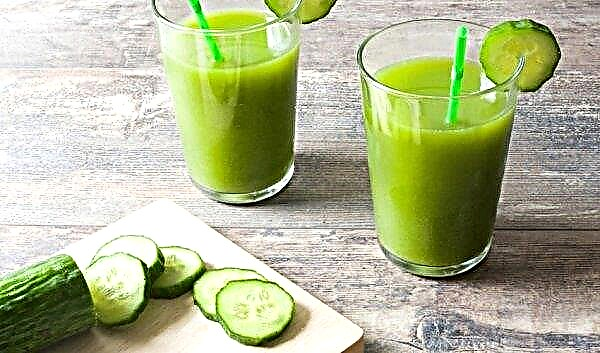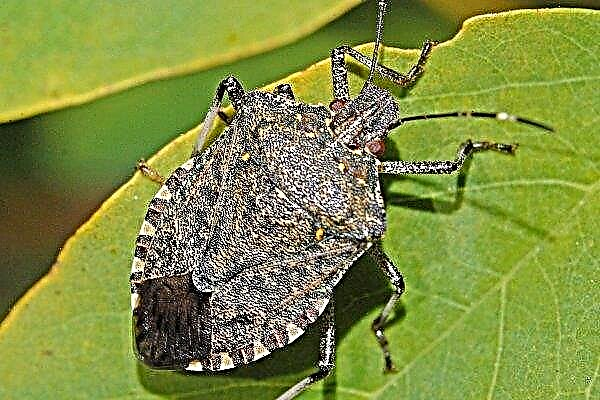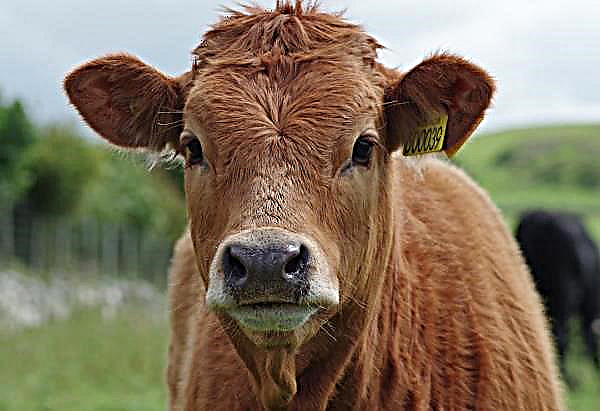In the subtropical climate, eggplant has been growing for more than 8 thousand years. And 200 years ago, they spread to other continents along with the supply of African goods. During this time, many varieties have appeared that can be grown in other climatic zones. The Clorinda variety, bred by Dutch breeders, is just that. Its varietal characteristics and cultivation features will be discussed in this review.
Description and characteristics of the variety
Most European eggplants belong to the species Solanum melongena L. The species is so diverse that it is almost impossible to classify or sort eggplants because of the huge variety of shapes, sizes and colors, so breeders do not trace the history of varieties, but only generalize some external characteristics.
Clorinda F1 eggplant seed producer is Monsanto. It is the world's largest seed company, owning more than 80% of all genetically modified seeds growing around the world.
The introduction of genetically modified eggplant is not welcome in all countries. In India, for example, a moratorium has been imposed on their distribution, and China has not joined the movement to grow such vegetables in its fields.
- As the main advantages of GM seeds, the manufacturing company indicates that:
- all varieties obtained undergo many years of field testing and scientific testing of any properties stated in the description;
- agronomic and nutritional characteristics, environmental safety are fully confirmed for any variety;
- these are varieties in which the content of proteins, fats, ash, fibers, oils, carbohydrates, amino acids, fatty acids, toxins and allergens or their absence is documented and has a scientific assessment formed by independent scientific expert groups.
Clorinda variety is characterized by:
- early ripening - 67 days from the appearance of seedlings;
- medium-sized bushes - height up to 1 m;
- prolonged fruiting;
- resistance to cold weather;
- the formation of ovaries in all weather conditions;
- productivity up to 6 kg from 1 m².
Did you know? In cooking, eggplant is considered vegetable, but from the point of view of botany it is a berry.
Distinctive features of the fruits of Clorinda:
- elongated oval shape;
- weight - about 350 g;
- color - intense violet-black;
- pulp - white, dense;
- the taste is pleasant, without bitterness;
- a small amount of seeds.

Pros and cons of the Clorinda variety
- Grade Advantages:
- can grow in a temperate climate and bear fruit in any weather;
- not susceptible to mosaic virus;
- has a pleasant taste of the fruit;
- has excellent yields.
- The disadvantages of the variety:
- Clorinda is grown from genetically modified seeds, which today causes a far from unambiguous reaction;
- in order to get good harvests of such varieties, seeds need to be bought again every year;
- There is data from farmers that GM varieties can be protected from some pests and be more intensely affected by others.
Landing time
Eggplants are grown in seedlings. Germination seeds begin to be planted in February.
Did you know? English name for eggplant "eggplant" denotes «egg plant» and stems from the fact that its berries, seen by the British, were white and shaped like an egg.
To better navigate, grow seeds in peat tablets or pots 2 months before planting in your area.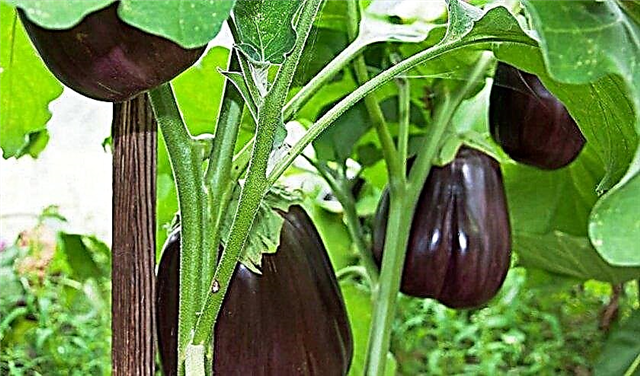
The rules for growing varieties
Eggplants are grown outdoors in a sunny area with well-drained fertile soil. Soil acidity can be slightly acidic (with a pH of 6.3 to 6.8).
Before planting, you will need to mix the soil with organic fertilizers (for example, with rotted manure at the rate of 1.5 kg per 3 m²) or fertilizers purchased in the store. In store fertilizers, the ratio of nitrogen, phosphorus and potassium should be maintained in a ratio of 1: 2: 1.
If the soil is heavy, clayey, then cover the crops with plastic mulching material to ensure natural heating of the root system. If seedlings are planted in the ground, then you need to do this when the plants reach a height of 20 cm. Between the bushes should be at least 30-40 cm.
The right conditions for eggplant:
- air temperature + 20–25 ° С;
- the presence of free space around the bush to ensure uniform lighting and air exchange;
- daylight hours of at least 12 hours.
Important! Eggplant flowers and leaves can cause poisoning due to the plant poison they contain. — solanine.
Eggplant Care Features
Good watering is required for eggplant. To preserve moisture, the crops are mulched. It also prevents the germination of weeds, reduces the risk of infection with late blight and pests. Crop care includes:
Crop care includes:
- the use of support pegs to ensure plant resistance when the fruits hang on them;
- constant soil moisture (achieved through the use of mulching material);
- fertilizing once every 2 weeks during the entire growing season, based on: potassium, phosphorus and nitrogen in a ratio of 1: 2: 1;
- yield limitation (leave 5-6 fruits per bush) to reduce the load on the trunk.
Clorinda can grow at any air temperature above + 12 ° C; therefore, the variety has no special requirements for this parameter. As for the bushes, they can grow up to 1 m. If necessary, you can pinch the top point of growth, directing nutrients to the development of the fruit. The side shoots are not typical for the bush, so there is no need for pruning the bush and forming.
Pest and Disease Control
The main pest for this culture is the cruciferous flea, which manifests itself in many tiny holes on the eggplant. To avoid this problem in open ground, dry kaolin clay is sprayed onto the plants.
Infected eggplant is treated with an appropriate insecticide (Actellic). A unique way to combat pest can be shared by American private farms growing eggplant in containers: a distance above 20 cm from the ground becomes insurmountable for the pest. And the flea simply does not fall into the containers.
A very aggressive pest is the Colorado potato beetle. An effective way to deal with it is to manually collect and destroy the eggs found, as well as spraying the plants with Prestige or Sonnet.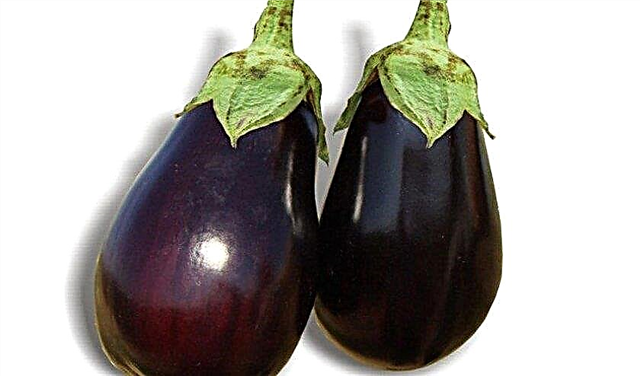 Eggplants are susceptible to mildew, verticillin wilt, but resistant to the mosaic virus. Great ways to prevent these diseases - a sunny area, regular (daily) watering of the root zone and enough free space for air circulation around each bush.
Eggplants are susceptible to mildew, verticillin wilt, but resistant to the mosaic virus. Great ways to prevent these diseases - a sunny area, regular (daily) watering of the root zone and enough free space for air circulation around each bush.
If the plants are still infected, then they use fungicide treatment (Trichodermin, Fitosporin), according to the instructions on the package.
How to harvest and store crops
Harvest begins to be harvested in the 16th week after the appearance of seedlings. The peel of a ripe fruit should be smooth, shiny. Size - 11–20 cm.
Important! The juice from the leaves and roots of eggplant can be used in the treatment of diseases of the throat and stomach, cough, asthma, toothache, rheumatism and skin problems.
Harvest Rules:
- You can not leave ripe fruits on the bushes. They may be bitter if collected unripe or overripe.
- You can not pull on the fruit, so as not to damage the bush or the eggplant itself. Trim the fruit with clippers.
- If the crop is not immediately used, then you can store it in the refrigerator in a plastic film for several weeks.
- Eggplant cannot be stored fresh for winter use, so if the harvest is large, think about recipes for winter harvesting.
- If the eggplant has a damaged peel, then it must be used quickly, before it begins to rot.
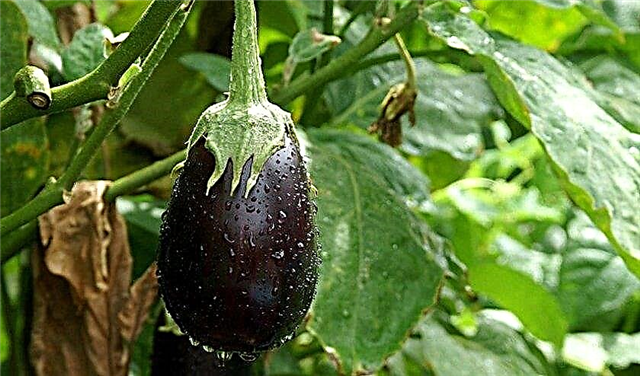 Growing eggplant is not a very time-consuming process, so you can easily plant more than a dozen of these excellent plants on your site. They can add variety to your daily diet.
Growing eggplant is not a very time-consuming process, so you can easily plant more than a dozen of these excellent plants on your site. They can add variety to your daily diet.



